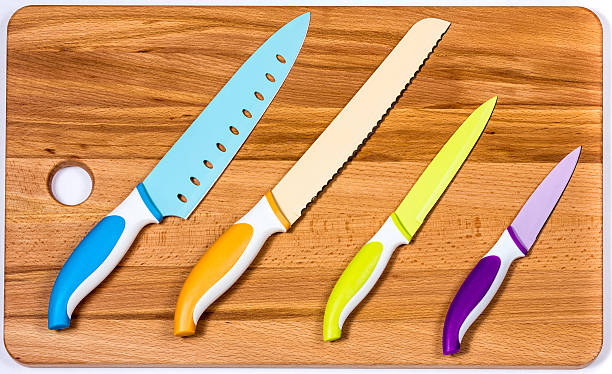Damascus Ceramic knives have advantages, but they also have quirks. The Japanese company Kyocera was the first to develop and start the serial production of Damascus knives in 1985. Later, these products became widespread, and began to be manufactured, and sold around the world, gaining fans among cooking homemakers and professional chefs. We will pay attention to them, having considered in this review the rules for using Damascus ceramic knives.
How to use a Damascus ceramic knife so that it lasts a long time? What function is it best suited for? Let’s get the answers right now!
Damascus Ceramic knives:
how to use them correctly due to the characteristics of the material Various household items, collectively called ceramic, have completely different compositions. The basis of the material for the manufacture of Damascus ceramic knife blades is zirconium dioxide, which is second only to diamond and corundum in hardness.
The highest hardness
The highest hardness of this material is both the main advantage of Damascus ceramic knives and the main feature of their use. At the same time, zirconia is very light and can be painted white or black. With longer firing, the blade material darkens and is brought to black with special dyes ー such knives are harder and more wear-resistant. Therefore, many people like to cut with ceramic knives: they are extremely sharp, very light, and they are beautiful, like a toy. Ceramics is completely corrosion-resistant, resistant to chemically active media, hygienic, easy to clean, and does not absorb odors.
Ceramic blades are sharpened
Ceramic blades are sharpened only on diamond-coated emery devices. Manually, ceramic knives are sharpened with a fine-grained diamond emery stone. Women are unlikely to like to buy special emery and manually crawl over it with a knife; you can give it for sharpening to a service and warranty center or a workshop with suitable equipment.
Very cheap models can be used as disposable ones, it’s good that they keep the original sharpening for a long time. While the average blade hardness of good quality steel knives is about 60HRC, for Damascus ceramic knives it reaches 86HRC. However, the hardness of the cutting edge of Damascus ceramic knives also has a downside: the material is quite brittle and sensitive to sudden changes in temperature and shock. In this regard, it is necessary to understand how to choose a Damascus ceramic knife, and how to use it, store and maintain it.
Damascus Ceramic knife – rules of use
1. You can cut with a Damascus ceramic knife on a wooden,
You can cut with a Damascus ceramic knife on a wooden, plastic, or silicone cutting board. Glass and ceramic boards will have to be excluded, even though they have the best hygienic properties. Otherwise, the ceramic knife will leave scratches on the glass surface, and the cutting edge will begin to dull and chip off at the point.
2. A Damascus ceramic knife is not suitable for cutting foods
A Damascus ceramic knife is not suitable for cutting foods with solids such as meat, fish bones, ice, and frozen convenience foods. A thin blade can chip even when cutting large-pitted peaches.
3. Sharp chopping movements are not recommended for a Damascus ceramic knife
Sharp chopping movements are not recommended for a Damascus ceramic knife during operation. Such a knife is designed for smooth cutting in a horizontal direction, they will not succeed in quickly chopping vegetables and herbs, as with the help of Japanese Nakiri or Santoku.
4. Do not scrape and clean fish from scales with a Damascus ceramic knife
Do not scrape and clean fish from scales with a Damascus ceramic knife. Its cutting edge is entirely not designed for transverse load. The blade itself cannot be bent to break, it must be carefully removed from dense foods such as cheese, and boiled meat. For the same reason, large fruits with a hard crust are not cut with a Damascus ceramic knife: watermelons, melons, zucchini, and pumpkins.
5. Wash the Damascus ceramic knife with warm water by hand.
Wash the Damascus ceramic knife with warm water by hand. Some manufacturers do not recommend using any detergents (you can choose a soft natural, without abrasive). Ceramics can be damaged in the dishwasher.
6. Keramo-knife is stored separately from metal knives and cutlery,
knife is stored separately from metal knives and cutlery, the blade should not touch steel or ceramics during use. The storage stand should be made of non-rigid materials: plastic, and wood.
7. Ceramics can crack from sudden temperature changes:
Ceramics can crack from sudden temperature changes: you can not heat the knife on the stove, in the oven, microwave; can not be left in the refrigerator; most suitable room conditions.
8. In general, a Damascus ceramic knife should be handled as carefully as possible,
In general, a Damascus ceramic knife should be handled as carefully as possible, you can not drop it on the floor, or stick it. The weakest spot is the tip of the blade, which tends to be quickly damaged by careless use.


